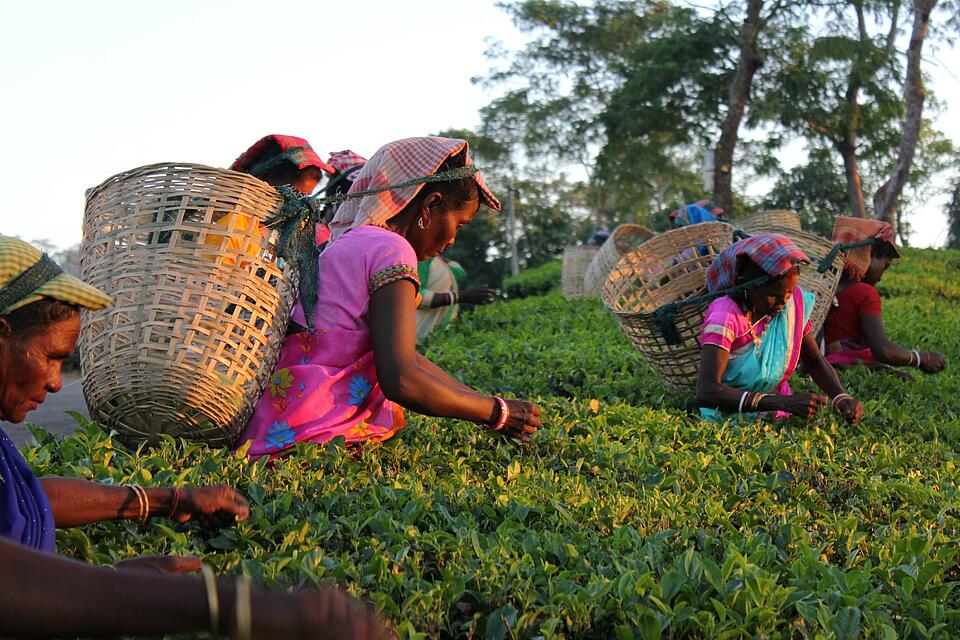
Tea Growing Areas
The different origins
Assam - The Most Popular Black Tea
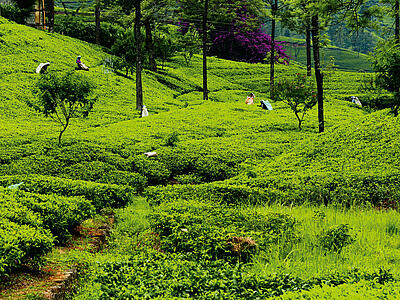
itsmejust
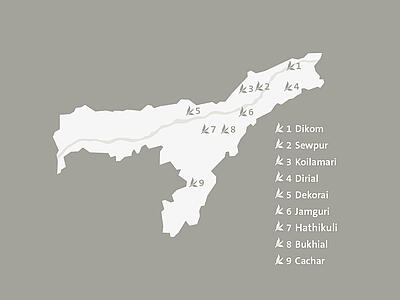
Assam, located in North India on the banks of the Brahmaputra River, is the largest contiguous tea growing region in the world, spanning approx. 360,000 km2. Since 1837, tea has been grown and cultivated in more than 2,000 gardens, primarily using the “CTC” production method (crushing, tearing, curling) and predominantly for the domestic
market in India. Due to the tropical climate and altitude ranging between 300 and 500 m, the tea plants grow very abundantly, yielding up to 30 harvests per year.
The tea is harvested between March and November, with the best teas produced during the second flush between May and June. During that period, many tea estates switch their production method to “orthodox” and produce fine broken and leaf teas with a medium to high proportion of “golden tips” (leaf buds). Assam Second Flush teas have a bold flavour, a full-bodied malty character and a copper-red to brown infusion. They are ideal for serving with milk or cream and are the main ingredient in popular recipes, such as the “East Frisian” tea blend. In India, tea is usually enjoyed with additional spices and milk as a “chai” blend. Our Assam tea range offers a selection of different qualities and varieties from various regions in Assam.
Ceylon - Favourite of the British
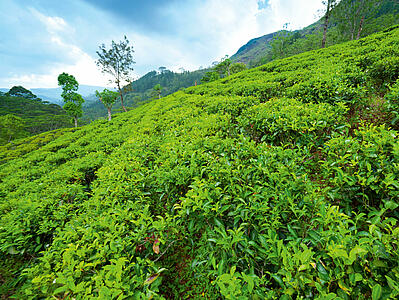
Anton_Gvozdikov
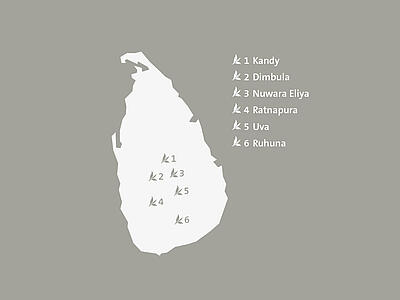
Ceylon tea should more accurately be called “Sri Lanka tea”, but due to its long history, it has retained the former name of the country. Tea growing has been an established tradition on the “the island of the sun” for nearly 150 years now. Scottish pioneer James Taylor seeded the first plants back in 1867, and today, Sri Lanka is the world’s fourth
largest tea producer. Tea plants flourish in every region of the island, from the flatlands to elevations of more than 2,000 metres high in the mountainous areas. One of the most famous regions, Dimbula, located in the western highlands, produces the peak quality in spring with its brisk, fresh and flavourful teas. The Uva area in the eastern highlands produces the best quality in late summer, teas with the distinctive robust and tart “Uva note”. The Nuwara Eliya region is situated in the middle of the central highlands, and exquisite qualities with floral and bright infusions are produced there all year round.
Teas that are much more full-bodied are cultivated in the “medium grown” Kandy region, while strong qualities are produced in Ruhuna, the “low grown” area. There are only a few green tea and organic tea gardens on Sri Lanka. Ceylon tea is not only popular as a single-leaf tea, it is also a key ingredient in favourite blends such as “English Blend”. Our Ceylon tea range offers you the best selection.
China - Cradle of Tea
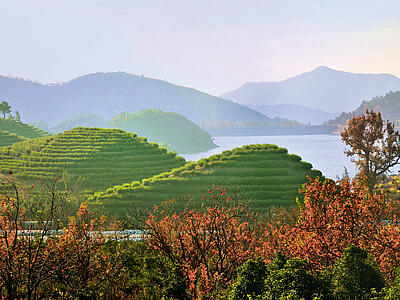
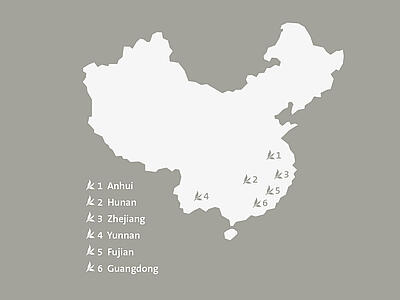
Tea has been grown and cultivated in China for 5,000 years now. This fascinating country is the origin of many black, green and white tea specialities. Black tea is produced in all nine tea producing provinces. The eastern province of Anhui is especially well-known for its excellent Kemun teas. Yunnan, located in the southwest, is the actual birthplace of tea. Popular robust black teas with beautiful tips as well as the famous “Pu Erh” tea originate from this region. The southern province of Hunan produces the highest volume of tea. The nation exports most of its black tea to foreign countries, since green tea is the predominant choice within China itself. Our China black tea range offers you a lot of excellent teaqualities.
The culture of growing tea and processing green tea began in China more than 4,000 years ago, making China the oldest tea producing country and the birthplace of tea culture. No other country in the world comes even close to producing as much tea as China does. All of the 16 tea producing provinces excel at offering premium green tea varieties. The eastern province of Zhejiang is particularly well-known for its specialities, including ”Lung Ching“and ”Anji White Tea“, but also for its classic gunpowder, Chun Mee and Sencha teas. In contrast, the Fujian province, located in Southeast China, is famous for white tea specialities and scented teas, such as jasmine tea. Within China itself, the tea culture is currently experiencing a remarkable renaissance. The number of tea houses and shops is increasing rapidly. Record top prices are being paid for superior qualities, which are also proudly brought as gifts to family celebrations and business events as a symbol of the highest esteem and appreciation. You can find a wide range of green tea from the origin China in our range.
Darjeeling - The Champagne of Teas
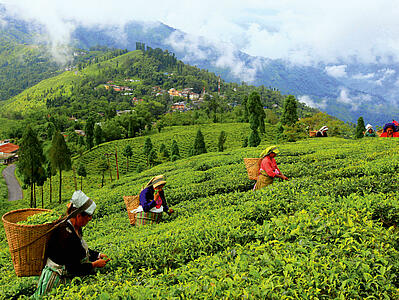
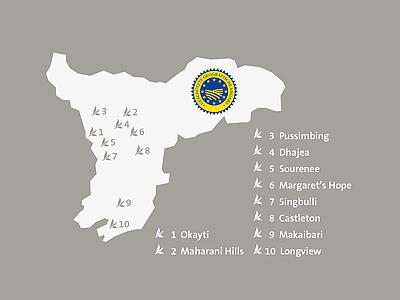
The well-known tea growing region in West Bengal is located between Nepal and Bhutan, at the base of the Himalayas. High-quality tea has been produced here since 1841 at altitudes of up to much higher than 2,000 metres. Only tea from the Darjeeling region in Northeast India is allowed to be called Darjeeling. British pioneer Dr. Campbell laid the foundation for the successful tea history of this region, which is a small but high-quality producing area that is home to more than 80 gardens. The classic Chinese Thea Sinensis tea plant primarily grows here, and the high elevation and climate give the tea its typical muscatel character.
The special aspect about the Darjeeling district in India is that although the finer Chinese variety is grown there, it is mainly processed into black tea, instead of green tea, as is the usual method. That is why Darjeeling has such a distinctive, special taste as compared to other black teas. The harvest period begins in spring with the first flush. These light teas have a very intensive floral character and a brisk, fresh and delicate flavour. The “in-between harvest” takes place between the first and second flush crops in terms of both timing and taste. The teas from the second flush summer harvest, characterised by their much more full-bodied taste, are followed by the “autumnals”, which are harvested up until early November and have a lighter, mild infusion and flavour. A variety of excellent Darjeeling tea can be found in our Darjeeling tea assortment.
Nepal - Best Teas from the "Roof of the World"
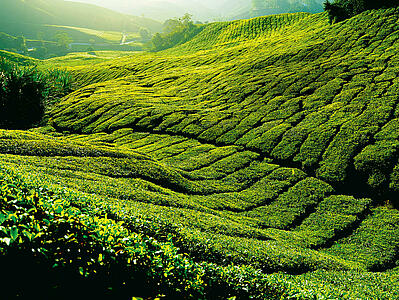
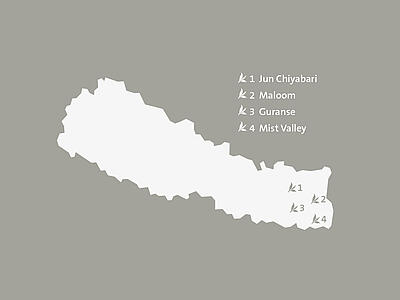
Tea has only been grown and cultivated in this small kingdom since the 1950s. Nepal borders India, or more precisely the Darjeeling tea growing area, and almost the same variety of tea grows on the Nepalese side of the border, especially in the IIam region. The landscape and soil are also very similar, and thus the tea is comparable. The relatively young tea growing region has evolved and expanded quickly in recent years. Nepal offers ideal conditions for growing tea. Even though tea from Nepal is not widely known yet, it is already greatly appreciated by connoisseurs. In our Nepal tea range you can find a selection of the best teas. And when you purchase teas from Nepal, you are supporting the region around the Himalayas, where tea is an important source of income.
Japan - Green Tea in Perfection
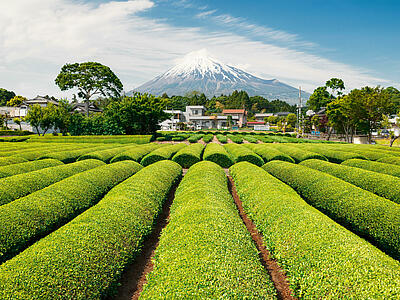
Jules_Kitano
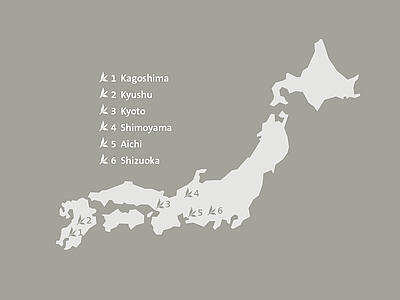
Japan has one of the oldest tea cultures in the world, which can be traced back more than 1,300 years. Japanese perfectionism is reflected in the tea qualities and the traditional tea ceremony. With its centuries of experience in tea, Japan is home to a wide range of different specialities. In addition to varieties for everyday enjoyment, Japan also offers
premium qualities produced with exceptional care. In Japan, green tea is produced almost exclusively, only a few tea enthusiasts are specialized in the production of black tea. Our Japanese teas come from Southern Japan, where the climatic conditions are especially favourable. In contrast to other countries of origin, altitude is not a decisive quality criterion in Japan. Along with the selection of the cultivar, good climatic conditions in the growing region and careful processing of the leaves after the harvest play a vital role – they make Japanese tea a premium product.
The close cooperation with our local Japanese partner lets us offer you excellent range of Japanese organic teas on a reliable basis and in the highest quality. All teas are certified organic and are thoroughly inspected and tested before being put on the market.
